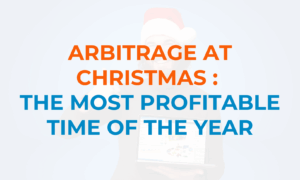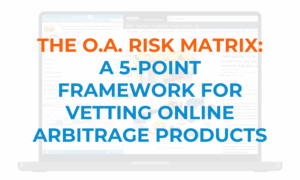How To Be a Trusted Seller on Amazon

As an Amazon seller, trust is your most valuable asset. Whether you’re flipping a retail arbitrage haul or managing hundreds of SKUs through FBA, building a reputation as a reliable and professional seller is key to long-term success. If you’re using SellerAmp, you’re already ahead of the game when it comes to product research and profitability analysis. But great data needs to be matched with excellent seller conduct! Here’s how to build trust on Amazon – step by step.
Provide Accurate Product Listings
When listing under an existing ASIN, make absolutely sure your item matches it exactly. Even small differences in packaging, model numbers, or included accessories can lead to buyer complaints and negative reviews.
Example: Don’t list a UK plug version of a product under an ASIN for the US version, even if the item is functionally identical! One customer complaint about receiving “the wrong item” can cost you your credibility – and potentially your selling privileges.
Pro Tip: Use the Alerts Panel and Variation data to catch inconsistencies before you list!
Price Competitively (But Responsibly)
Being the cheapest doesn’t always make you the most trusted. In fact, too-low prices can make buyers suspicious, especially in categories with counterfeit concerns. Price too high, and you may lose the Buy Box.
Example: You find a best-selling water bottle retailing around $21.99. Other FBA sellers are priced between $20.50–$22.00. If you undercut everyone at $15.49, sure, you might sell fast – but customers could question its authenticity, plus your profit margin takes a hit.
Pro Tip: Use the historical selling data you can find on the SAS Charts Panel to price within a trusted range, and factor in your fees with the Profit Calculator so you’re not guessing on margins.
Ship Fast and Pack Right
If you’re fulfilling orders yourself (FBM), you need to meet – or exceed – Prime standards. That means fast dispatch, careful packaging, and consistent tracking updates. Use sturdy boxes, bubble wrap or eco filler for fragile items, and never reuse branded packaging from other retailers! Damaged or messy packaging can lead to poor reviews – even if the product is fine.
Pro Tip for FBA sellers: Double-check that all items sent to Amazon are in “like new” condition (if selling as new). Any damage, shelf wear, or missing accessories could result in negative feedback – and Amazon will trace it back to you!
Keep Your Metrics Green
Amazon uses key performance metrics to evaluate whether they (and buyers) can trust you. These include:
- Order Defect Rate (ODR) – stay under 1%
- Late Shipment Rate – stay under 4%
- Pre-fulfillment Cancellation Rate – stay under 2.5%
- Customer Feedback – the more 4-5 star ratings, the better!
Example: You find a clearance deal on a discontinued action figure and only buy five units. They sell quickly, but you forget to update inventory after the last one sells. An order comes in and you have to cancel. That’s a ding on your cancellation rate!
Respond to Customers Promptly
Amazon expects responses to customer messages within 24 hours (yep, that includes weekends). Fast, helpful communication makes a big difference in customer trust and can often prevent negative reviews before they happen. Be polite, empathetic and proactive. Even a simple issue like a late delivery, which isn’t your fault, can be turned into a positive experience with a thoughtful message.
Request (But Don’t Beg For) Reviews
Amazon allows sellers to request reviews using the “Request a Review” button in Seller Central. This is the safest, fully compliant way to prompt customers for feedback. Not all buyers will leave a review, but that’s okay! Try to focus on excellent service, and the reviews will come naturally over time.
Pro Tip: Don’t offer incentives for reviews, and don’t ask for only positive ones. These violate Amazon’s policies and could result in suspension.
Stay Compliant and Up-To-Date
Amazon’s policies can shift quickly. Categories that were open yesterday might be gated today. Some brands may suddenly start filing intellectual property (IP) complaints—even if you’ve sold their items in the past without issue.
Example: You’ve been flipping a well-known toy brand successfully for months. Then, without warning, they start enforcing IP restrictions. You receive a complaint, and now your account is under review.
Pro Tip: Use SellerAmp’s IP Analysis (found on the Alerts Panel) to check complaint history before sourcing. This lets you steer clear of high-risk brands and maintain compliance, which Amazon rewards with more visibility and seller trust.
To summarize, being a trusted Amazon seller isn’t about perfection – it’s about consistency! From pricing and packaging to customer care and compliance, your actions shape your reputation. With SellerAmp by your side, you’ll make smarter sourcing decisions, avoid avoidable pitfalls, and earn the kind of trust that drives long-term profits.
Want more? Head over to our YouTube channel HERE for tons of expert advice or hit the button below for a FREE two week trial of SellerAmp SAS!




